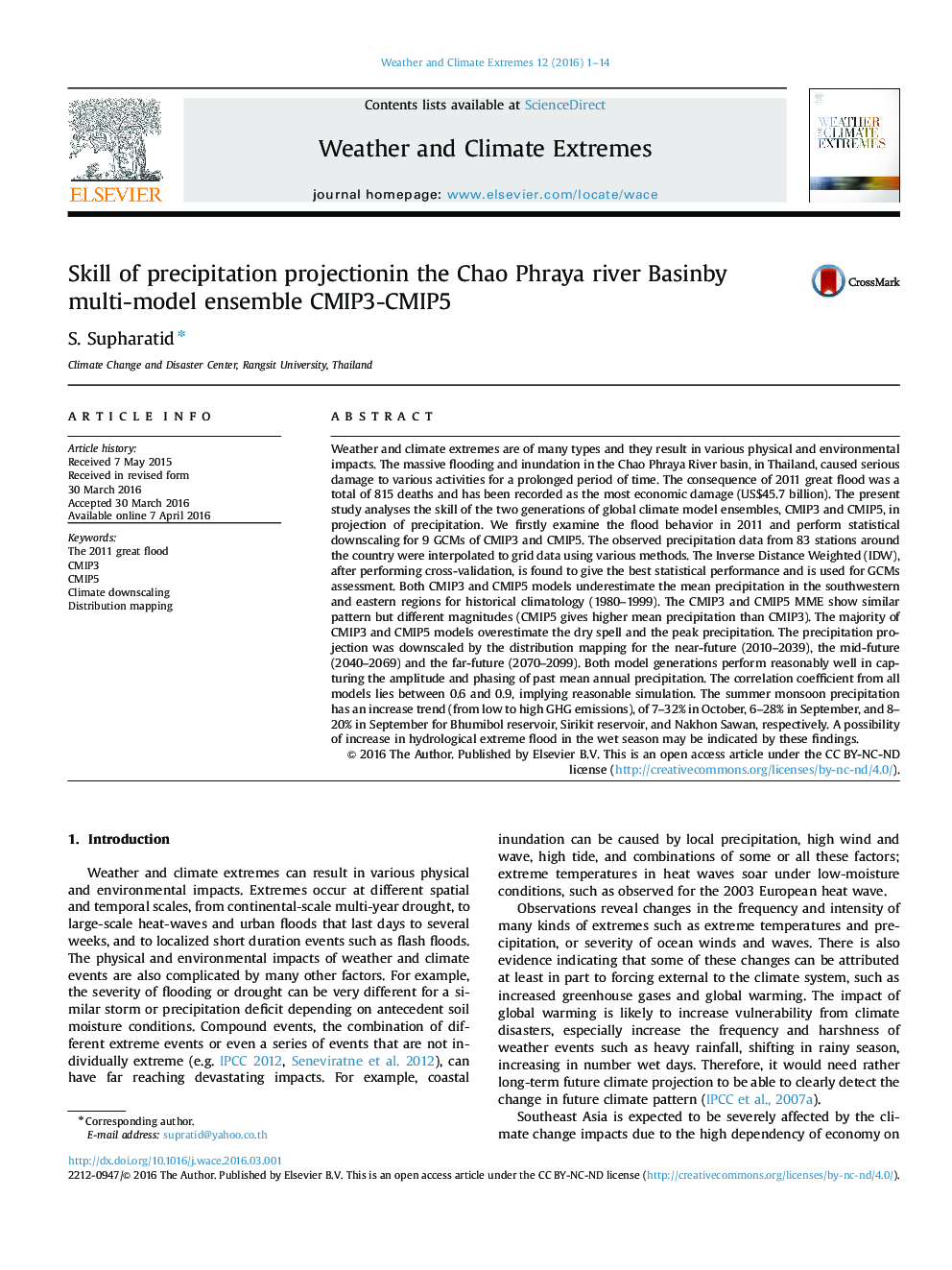| کد مقاله | کد نشریه | سال انتشار | مقاله انگلیسی | نسخه تمام متن |
|---|---|---|---|---|
| 1066633 | 1485945 | 2016 | 14 صفحه PDF | دانلود رایگان |
Weather and climate extremes are of many types and they result in various physical and environmental impacts. The massive flooding and inundation in the Chao Phraya River basin, in Thailand, caused serious damage to various activities for a prolonged period of time. The consequence of 2011 great flood was a total of 815 deaths and has been recorded as the most economic damage (US$45.7 billion). The present study analyses the skill of the two generations of global climate model ensembles, CMIP3 and CMIP5, in projection of precipitation. We firstly examine the flood behavior in 2011 and perform statistical downscaling for 9 GCMs of CMIP3 and CMIP5. The observed precipitation data from 83 stations around the country were interpolated to grid data using various methods. The Inverse Distance Weighted (IDW), after performing cross-validation, is found to give the best statistical performance and is used for GCMs assessment. Both CMIP3 and CMIP5 models underestimate the mean precipitation in the southwestern and eastern regions for historical climatology (1980–1999). The CMIP3 and CMIP5 MME show similar pattern but different magnitudes (CMIP5 gives higher mean precipitation than CMIP3). The majority of CMIP3 and CMIP5 models overestimate the dry spell and the peak precipitation. The precipitation projection was downscaled by the distribution mapping for the near-future (2010–2039), the mid-future (2040–2069) and the far-future (2070–2099). Both model generations perform reasonably well in capturing the amplitude and phasing of past mean annual precipitation. The correlation coefficient from all models lies between 0.6 and 0.9, implying reasonable simulation. The summer monsoon precipitation has an increase trend (from low to high GHG emissions), of 7–32% in October, 6–28% in September, and 8–20% in September for Bhumibol reservoir, Sirikit reservoir, and Nakhon Sawan, respectively. A possibility of increase in hydrological extreme flood in the wet season may be indicated by these findings.
Journal: Weather and Climate Extremes - Volume 12, June 2016, Pages 1–14
